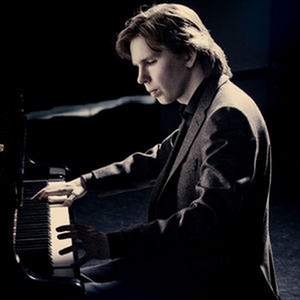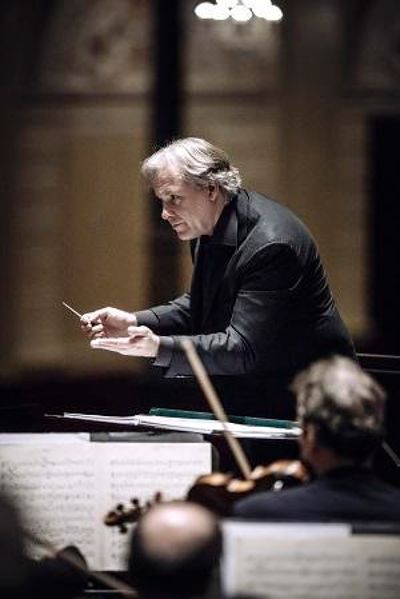Review: NJ SYMPHONY PERFORMS GRIEG AND BRAHMS at Bergen PAC

Composer Jean-Féry Rebel was something of a rebel (sorry could not resist) in late 17th and early 18th century France for his use of unusual often dissonant harmony. Les Élémens ("The Elements") which describes the creation of the world was a radical work for its time and still feels surprisingly modern.
Chaos - the opening section of the work opened the NJSO concert and conductor Markus Stenz appeared right at home with the work's inner turbulence.
As the composer noted: "The introduction to this Symphony is Chaos itself; that confusion which reigned among the Elements before the moment when, subject to immutable laws, they assumed their prescribed places within the natural order. This initial idea led me somewhat further. I have dared to link the idea of the confusion of the Elements with that of confusion in Harmony. I have risked opening with all the notes sounding together, or rather, all the notes in an octave played as a single sound." Hard to believe a composer this progressive-minded was actually the Court Composer of King Louis the XIV!
Soloist Juho Pohjonen took the stage next in the well-known Grieg 1st Piano Concerto. The Robert Schumann influence on Grieg's 1st Piano Concerto is apparent right from the start with mammoth descending chords that rattle the roof. Then again with the majestic and justly famous first theme played first by the winds and then immediately repeated by the piano. The development features a flurry of piano arpeggios underpinning the woodwinds in another tip of the hat to Schumann. Even the overall structure of the first movement borrows from Schumann, yet for all its similarities the piece could not be more different. And soloist Pohjonen deftly brought to the surface a great many of these contextual and character differences. Right from the start is was clear this was going to be a powerful and aggressive, take on the concerto.
The piece is so ubiquitous that it is often hard to find something new to say, but Pohjonen chose an aggressive approach highlighting his considerable technical skills. Soon after the Schumann "homage" passes, the movement become increasingly Scandinavian, with sections reflecting, and showing influence of Norwegian folk tunes (often stressing the weaker second and fourth beats of each bar). Pohjonen brought these nuances front and center. It's the marvelous contrast of huge passionate octaves against the charming folk melodies that make the piece so very special.
The second movement was ravishing, featuring long romantic phrases (far from the Schmannian influence of the 1st movement). But some of the simplicity and tenderness of the melodies might have benefited from a more lilting tempo. Conductor and soloist seemed to feel the need to keep the energy leaning forward and Pohjonen delivered phrase after phrase with great elegance and sensitivity.
The final movement - probably the highlight of the evening - falls squarely in the Norwegian medium once again with a lively and passionate dance rhythm dominating. The movement featured some especially lovely playing by the wind section -particularly the flutes. The Andante maestoso lived up to its name and was clearly right in Pohjonen's wheel-house, as he played it with great majesty bringing much of the house to its feet.
The Brahms Second Symphony made up the second half of the program. The 2nd is one of the composer's brighter and lighter works, so much so that it is frequently referred to as his "Pastoral" (in clear reference to Beethoven 6. Conductor Markus Stenz brought a light and bucolic quality to the opening movement. The ensuing development section was a bit lacking urgency and felt a bit ponderous. The highlight of the movement was the sonorously dark underpinning of the low strings which provided a lovely contrast to the bucolic woodwind solos and the heavenly flute solo.
The second movement, Adagio, is certainly one of Brahms' finest creations. Maestro Stenz brought a relaxed and thoughtful almost melancholy pace to the slow movement. Interestingly, during the solo lines the maestro became increasingly emphatic and demonstrative (almost overly so) managing his musicians play.
The composer chose an intermezzo rather than a scherzo as his third movement and the Allegretto was more played with great confidence and the pizzicatos were razor sharp. The oboe solo was duly melancholic and plaintive and the softly articulated moments, which recall Dvorak's Slavonic Dances, were delightful.
The finale, another of Brahms' most marvelous creations, featured a brisk but steady tempo, marked by carefully articulated tempo changes that the maestro handled amiably. The entire symphony seemed to be prelude for the triumphant finale, whose last few measures culminated in a mammoth, fortissimo D major chord by the brass, which was absolutely stirring.
-Peter Danish, Classical Editor
Reader Reviews
Videos

